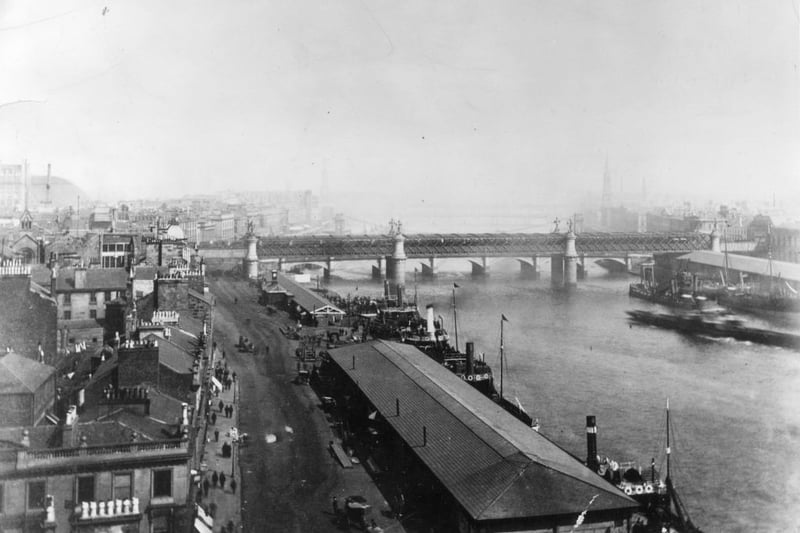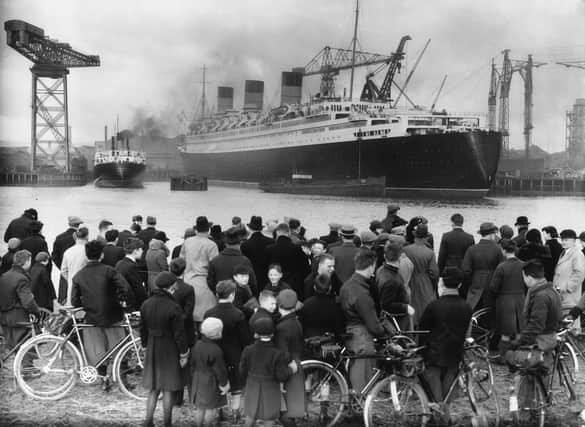For 250 years, Glasgow was shipbuilding capital of the world - so much so that the term ‘Clydebuilt’ was synonymous with high quality craft across the globe.
As Glaswegians, we’re proud of our shipbuilding heritage - there’s not a soul born in Glasgow without some kind of connection to the shipyards, whether that be in riveters, welders, labourers, foreman, or any other trade that kept big steel ships pouring out of the River Clyde.
At it’s peak, tens of thousands of people were employed by the shipyards of the Clyde, from Govan all the way to Clydebank, the River Clyde was flanked end-to-end by massive dry docks, towering cranes, and the skeletons of massive steel monoliths sparked together by the people of Glasgow.
Glasgow built the biggest and best ships in the world for most of the 20th century - constructing around a fifth of all ships launched in the early 1900s. Somewhere between 25,000 and 30,000 naval, merchant and passenger ships were built upon the Clyde and its tributaries since the Scott family set up the first shipyard along the River Clyde in Greenock in 1711.
The Clyde’s largest shipyards include John Brown’s shipyard in Clydebank, which constructed some of the largest and most impressive cruise liners of the 20th century in the small humble town, and Fairfield Shipyard in Govan - which many Glaswegians can trace heritage to, given the massive scale of the shipyard.
The end of the Second World War signalled the beginning of the end for the Clyde, and while the shipyards remained open for decades afterwards, it would be in slow decline as Glasgow was forced to compete with emerging industries in Asia.
Now there are only two major shipyards open on the Clyde today, it’s estimated that more than 300 firms have engaged in shipbuilding on Clydeside, of those 300 around 30 to 40 firms were operating at any given time. It wasn't all just shipbuilding and industry on the Clyde however - it runs from the Firth of Clyde by Greenock and Gourock right through the centre of Glasgow and feeds into towns throughout Lanarkshire. The Clyde is the lifeblood of the West of Scotland - it made it possible for us to begin settlements on the banks of the river, it gave us industry, it really made Scotland what it is today.
Back before the days of package holidays, it was the main route Glaswegians used to holiday - mostly during the Glasgow Fair Fortnight. For generations Glaswegians would travel down the Clyde on paddle steamers to destinations like Ayr, Troon, and Rothesay on the Isle of Bute.
As the 20th century moved on, and commercial flights became more and more accessible for working class people, the idea of a staycation seemed a bit naff compared to hot destinations across Europe.
Join us as we journey back in time down the River Clyde - taking in over 150 years of shipbuilding, holiday making, and more in just 30 pictures.
At it’s peak, tens of thousands of people were employed by the shipyards of the Clyde, from Govan all the way to Clydebank, the River Clyde was flanked end-to-end by massive dry docks, towering cranes, and the skeletons of massive steel monoliths sparked together by the people of Glasgow.

5. Bon voyage!
Crowds gather to watch the new Cunard White Star liner Queen Mary leaving her fitting-out berth in the John Brown & Co shipyard at Clydebank. Handkerchiefs are waved as the massive liner makes her way down the river Clyde to the sea, en route to Greenock and Southampton.

6. A bridge over the River Clyde (1870)
A bridge over the River Clyde as seen from the Sailors’ Home, Glasgow.

7. Spankies
Spankies (or Manhattan, Panama Jax, or the Trading Post depending on your age) could be found on the Clyde Walkway from 1974 onwards. It was the first purpose-built disco in Glasgow, it was situated right on the River Clyde and for a while was one of the hottest clubs in Glasgow.

8. The Cunard Liner on the River Clyde, circa 1905
The Cunard liner RMS Campania, built in Glasgow in 1892. She served at the Battle of Jutland, and sank in 1918 after a collision with the HMS Revenge whilst serving as an aircraft carrier. Colourised by HotPot.AI


